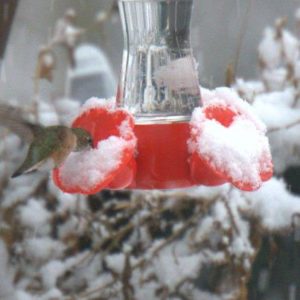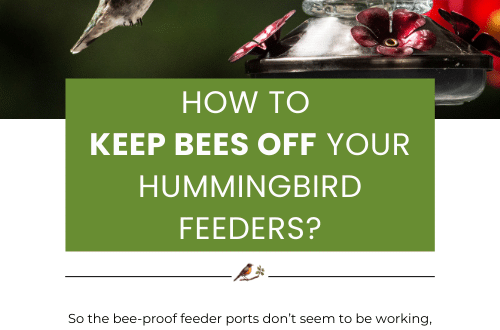Regardless of what the groundhog says…hummingbird feeders!

On Cape Cod, there was even a big news story last year, where one lonely Ruby Throated was made famous! A few residents were hanging heat lights over their hummingbird feeders to keep nectar from freezing! Another reported bird made headlines in North Carolina too.
Regardless of what Punxsutawney Phil decides, hummingbird feeders should be out, filled and ready before the birds actually make their way to your neck of the woods. Project Ruby Throat and some other sites even track the great migration, with reports of the first birds arriving from the south and their directional sprawl north, east and west.
Since hummingbirds are so darn territorial, it might be a good idea to start thinking about adding an additional feeder this year, especially if you’d like to see more of the buzzing antics in your yard. If you hosted them last year… the same ones will likely return! And if you’ve never made your own nectar… this is definitely the season to start! We think the birds prefer the home made solution over commercial mixes any day. NO red dye needed. The recipe is so simple, it’s table sugar (cane sugar only) and water… that’s it! Check out some suggested plantings (along with the recipe) that will help lure the birds as well.
And make a vow to keep feeders fresh this year, hummingbirds may not return to a feeder that has spoiled nectar. Every two to three days nectar should be changed in the height of summer and extreme temps. You may not want to fill the feeder all the way unless most of the nectar is being used in between cleaning and filling.
Here’s hoping for an early spring!

